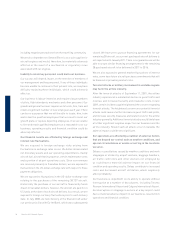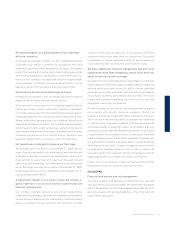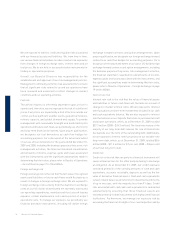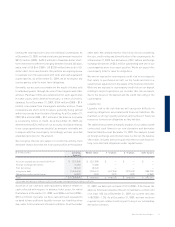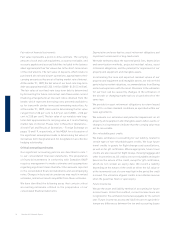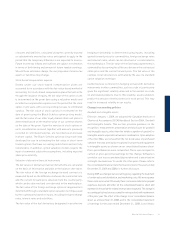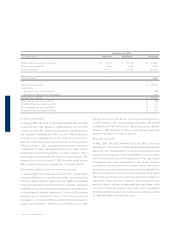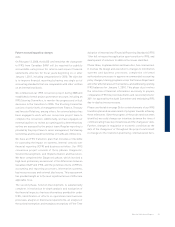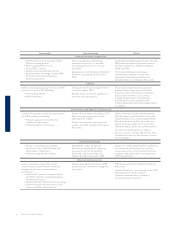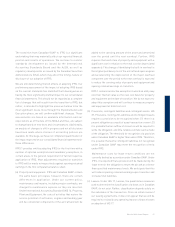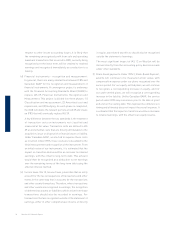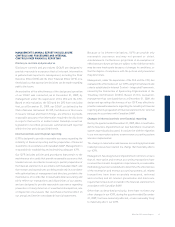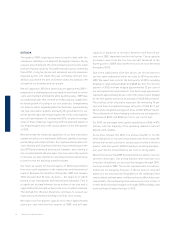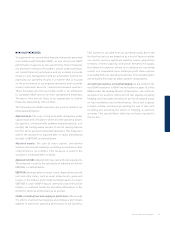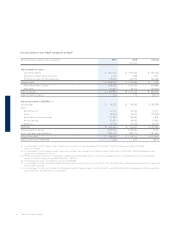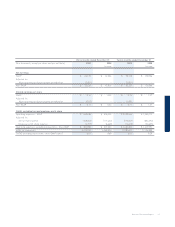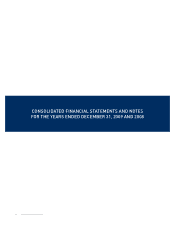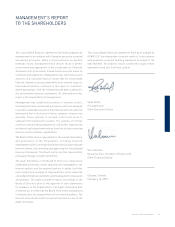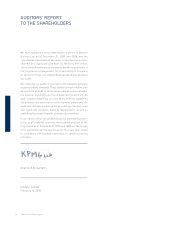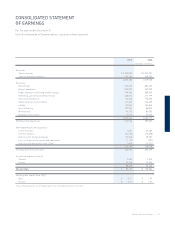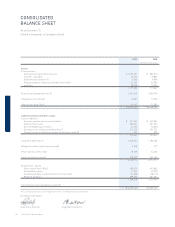Westjet 2009 Annual Report Download - page 68
Download and view the complete annual report
Please find page 68 of the 2009 Westjet annual report below. You can navigate through the pages in the report by either clicking on the pages listed below, or by using the keyword search tool below to find specific information within the annual report.
38 WestJet 2009 Annual Report
in equity, any related tax effects should also be recognized
outside the statement of earnings.
The most signifi cant impact of IAS 12 on WestJet will be
derived directly from the accounting policy decisions made
under other standards.
(f) Share-based payments: Under IFRS 2, Share-Based Payment,
awards will continue to be measured at fair value, with
compensation expense under our plans recognized over the
service period. For our equity-settled plans, we will continue
to recognize a corresponding increase in equity, and for
our cash-settled plans, we will recognize a corresponding
increase in the liability. Unlike Canadian GAAP, the service
period under IFRS may commence prior to the date of grant
and end on the vesting date. This represents a difference in
timing and ultimately does not impact the overall expense. It
is estimated that the impact on transition would be a decrease
to retained earnings, with the offset to an equity reserve.
respect to other lessee accounting issues, it is likely that
the remaining unrecognized profi t from sale and operating
leaseback transactions that occurred in 2005, currently being
recognized over the lease term, will be credited to retained
earnings and recognized immediately as a reduction to a
liability.
(d) Financial instruments – recognition and measurement:
In general, there are many similarities between IFRS and
Canadian GAAP for the recognition and measurement of
fi nancial instruments. A convergence project is underway
with the Financial Accounting Standards Board (FASB) to
replace IAS 39, Financial Instruments: Recognition and
Measurement. This project is divided into three phases: (1)
Classifi cation and measurement; (2) Amortized cost and
impairment; and (3) Hedging. As each phase is completed,
the IASB will delete the relevant portions of IAS 39 and create
an IFRS that will eventually replace IAS 39.
A key difference between the two standards is the treatment
of transaction costs on instruments not classified and
measured at fair value. Transaction costs are defi ned in IAS
39 as incremental costs that are directly attributable to the
acquisition, issue or disposal of a fi nancial asset or liability.
Under Canadian GAAP, we elected to expense these costs
as incurred. Under IFRS, these costs are to be added to the
initial measurement and recognition of the instrument. From
an initial review of our instruments, it is estimated that the
impact on transition date would be an increase to retained
earnings, with the offset to long-term debt. This amount
would then be recognized as a deduction to net earnings
over the remaining terms of the long-term debt using the
effective interest method.
(e) Income taxes: IAS 12, Income Taxes, prescribes that an entity
account for the tax consequences of transactions and other
events in the same way that it accounts for the transactions
and other events themselves. Therefore, where transactions
and other events are recognized in earnings, the recognition
of deferred tax assets or liabilities which arise from those
transactions should also be recorded in earnings. For
transactions that are recognized outside of the statement of
earnings, either in other comprehensive income or directly


